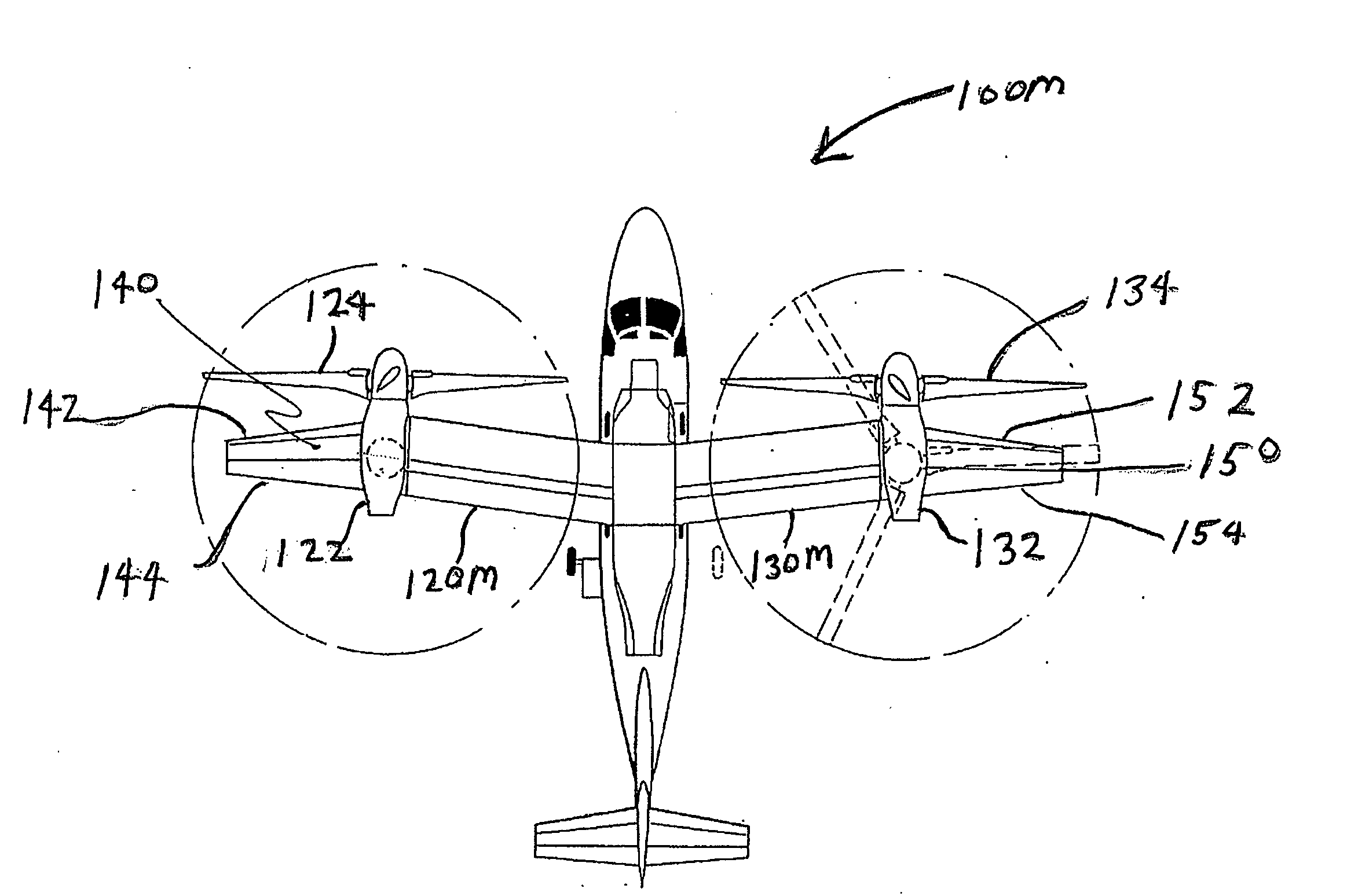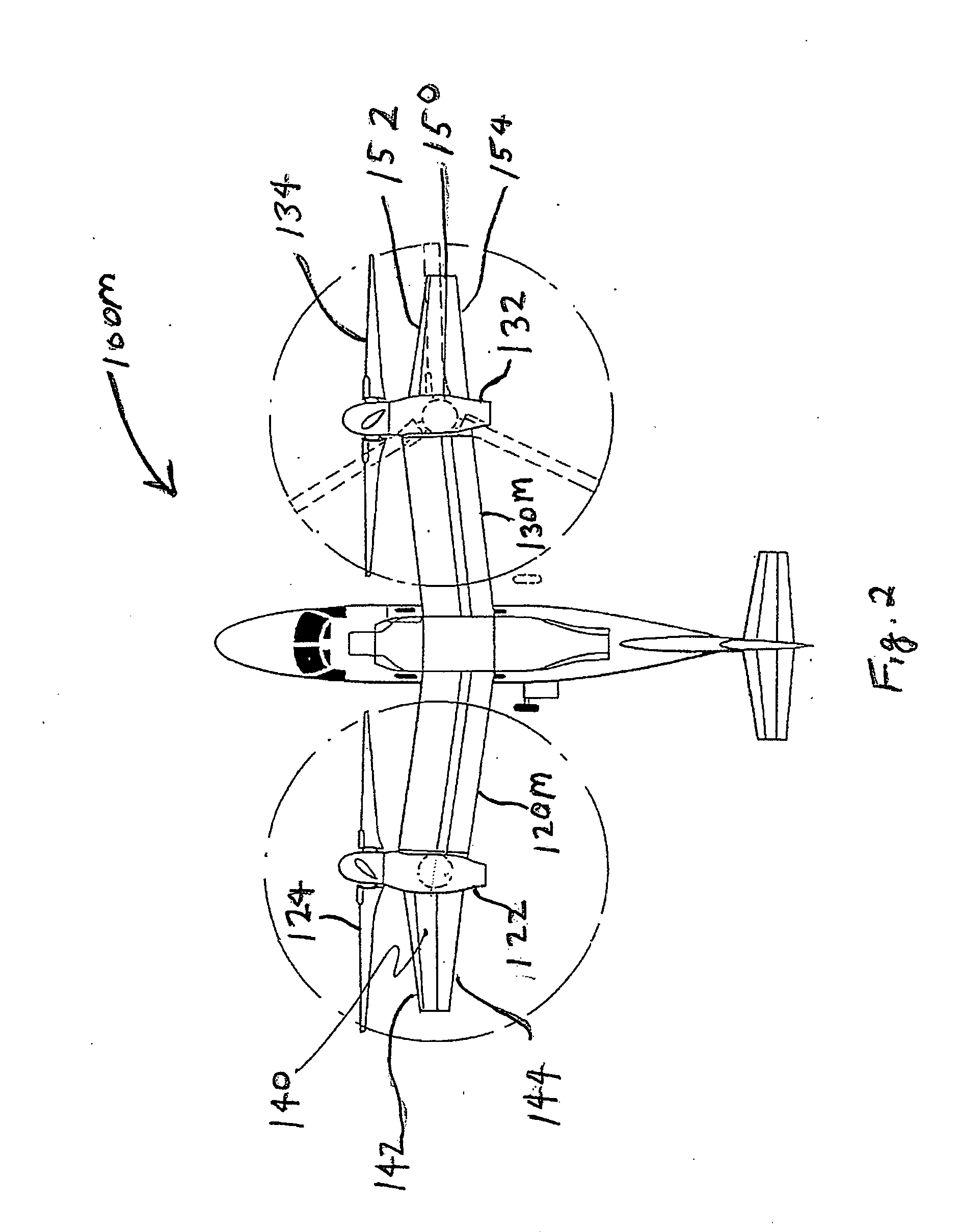Tilt outboard wing for tilt rotor aircraft
a tilt-rotor aircraft and outboard wing technology, applied in vertical landing/take-off aircraft, aircraft navigation control, transportation and packaging, etc., can solve the problems of high wing aspect ratio, weight and structural dynamics considerations, high level of buffeting, etc., to reduce the buffeting of aircraft and improve the flight performance of aircraft with outboard wings
- Summary
- Abstract
- Description
- Claims
- Application Information
AI Technical Summary
Benefits of technology
Problems solved by technology
Method used
Image
Examples
Embodiment Construction
[0026]In FIG. 1 a rotorcraft 100 generally includes a fuselage 110, a left wing 120 with tilting nacelle 122 and rotor 124, and a right wing 130 with tilting nacelle 132 and rotor 134. As with other prior art aircraft of this type, each of the wings 120, 130 has a wing aspect ratio is 5.5. To illustrate the tilt-rotor aspect of the design in a simplified manner, the nacelles 122, 132, and the right rotor 134 are shown in the lifting configuration in dashed lines.
[0027]It should be appreciated that although rotorcraft 100 is depicted here in a substantially to-scale model of a Bell / Agusta BA 609, the drawing should be interpreted as being representative of tilt-rotorcraft in general. In particular, it is contemplated that the inventive subject matter could also be applied to twin tilt-rotor, quad tilt-rotor configuration, etc.
[0028]In FIG. 2 the rotorcraft 100M of FIG. 1 has been modified to include outboard wings 140, 150, which increase the wing aspect ratio (ratio of wing span to ...
PUM
 Login to View More
Login to View More Abstract
Description
Claims
Application Information
 Login to View More
Login to View More - R&D
- Intellectual Property
- Life Sciences
- Materials
- Tech Scout
- Unparalleled Data Quality
- Higher Quality Content
- 60% Fewer Hallucinations
Browse by: Latest US Patents, China's latest patents, Technical Efficacy Thesaurus, Application Domain, Technology Topic, Popular Technical Reports.
© 2025 PatSnap. All rights reserved.Legal|Privacy policy|Modern Slavery Act Transparency Statement|Sitemap|About US| Contact US: help@patsnap.com



